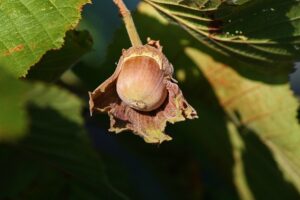If you’re passionate about sustainability, love the art of gardening, and enjoy reaping the delicious benefits of your labor, then growing American hazelnuts could be your next green adventure. The American hazelnut (Corylus americana) is an indigenous shrub that holds great promise as a sustainable and locally-adapted alternative to imported nuts. This guide will lead you through the process of growing American hazelnuts, from seedling to harvest basket. Whether you’re a gardening enthusiast, sustainability advocate, or nut grower, you’ll find invaluable pointers in this piece.
Introduction to American Hazelnuts
What are American Hazelnuts?
Botanically classified as Corylus americana, the American hazelnut is a native shrub species that thrives in the mixed hardwood forests of North America. Hazelnuts are prized for their adaptability, robust growth, and of course, their nutritious, delicious nuts.
Sustainability and Nut Production
The cultivation of American hazelnuts aligns perfectly with sustainable living practices. These shrubs provide excellent wildlife habitat, contribute to soil health, and are a source of food and income. With the growing concern over food miles and imports, the potential of the American hazelnut to reduce our dependence on foreign nuts is especially appealing.
Understanding American Hazelnuts
Botanical Characteristics
Corylus americana is a deciduous multi-stemmed shrub that can reach 8-12 feet in height at maturity. It has a bushy growth habit and is often found in clumps due to its ability to root sprout, spreading to form dense thickets.
Ideal Growing Conditions
American hazelnuts prefer a temperate climate and can grow in a variety of soil types. They are particularly well-suited to USDA hardiness zones 4-9. Full sun to partial shade and well-drained, acidic to slightly alkaline soils are the best for optimal growth.
Planting and Cultivation
Selecting the Right Location
When choosing a site for your American hazelnuts, consider the growth habits of the shrub. It’s important to place them where they can grow freely without becoming a nuisance. Select a site that receives at least four hours of sunlight daily, has good air circulation, and is away from competition with other plant roots.
Soil Preparation and Planting Process
Prepare the soil by removing any rocks or roots and loosening it to a depth of at least one foot. Next, create a hole twice the size of the hazelnut seedling’s root ball. Plant the seedling with the top of the root ball level with the soil surface. Water generously after planting to help the plant establish its roots.
Watering and Fertilizing Tips
American hazelnuts need regular watering, especially during dry spells in the first two years after planting. To encourage good establishment, use a balanced fertilizer in spring during the first few years of growth. After the third year, organic mulch can provide the necessary nutrients.
Adult Size and Pollination
Once mature, American hazelnuts typically reach a height and spread of 10 to 16 feet, forming a rounded shape. Male and female flowers are found on the same plant (monoecious), with pollination primarily occurring through wind. To ensure a good nut harvest, it’s advantageous to plant more than one shrub to increase cross-pollination. The pollination period usually takes place in early spring, before the leaves develop, making it less dependent on insect pollination and more on the wind. Keep in mind that it can take three to five years for the plants to start producing nuts after planting.
Maintenance and Care
Pruning Techniques
Regular pruning is important to maintain the shape of the shrub, encourage good airflow, and remove any dead or diseased wood. It’s best to prune American hazelnuts in late winter or early spring before new growth begins.
Pest and Disease Management
Hazelnuts are not typically bothered by pests and diseases, but it’s good practice to monitor them for any issues. Common pests include aphids and caterpillars, while Eastern Filbert Blight is a fungal disease that can affect the shrub.
Harvesting and Storage Recommendations
Harvest your American hazelnuts when the nuts start to fall from their husks. Collect them from the ground and remove the husks. Dry the nuts thoroughly and store them in a cool, dry place. Hazelnuts will last for several months if stored correctly.
Benefits of Growing American Hazelnuts
Environmental Benefits
Growing American hazelnuts can have numerous positive impacts on the environment. They aid in soil conservation, provide wildlife with food and habitat, and contribute to the local ecosystem.
Nutritional Value and Culinary Uses
American hazelnuts are a rich source of protein and healthy fats. They can be eaten raw or roasted and used in a variety of culinary applications, from baking to sauces and as a topping for dishes like salads and oatmeal.
Conclusion
Growing American hazelnuts is a delightful pursuit that offers the satisfaction of contributing to a healthier, more resilient ecosystem. With a little care and attention, you can harvest your very own crop of these delicious nuts. Start small, learn as you grow, and enjoy the process of nurturing a plant that is as rewarding to the land as it is to your taste buds.

